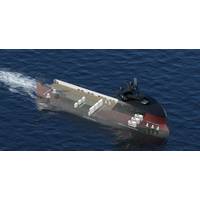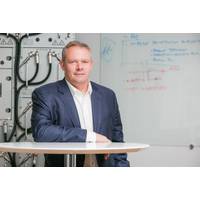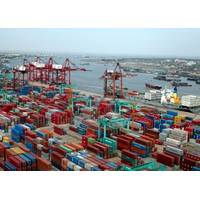Bousso: TotalEnergies' ROI-TotalEnergies power play shows Big Oil how to make energy transition work
TotalEnergies of France is betting heavily on renewables and power, positioning itself as a leader in the global energy demand wave. It also offers investors an alternative to its rivals who are doubling down on gas and oil. Since 2022, the strategies of European oil companies have been in a constant state of flux. The sanctions and full-scale Russian invasion of Ukraine created a shock to the energy system that shifted the focus from long-term energy transformation to near-term security.
Bousso: TotalEnergies' ROI-TotalEnergies power play shows Big Oil how to make energy transition work

TotalEnergies of France is betting heavily on renewables and power, positioning itself as a leader in the global energy demand wave. It also offers investors an alternative to its rivals who are doubling down on gas and oil. Since 2022, the strategies of European oil companies have been in a constant state of flux. The sanctions and full-scale Russian invasion of Ukraine created an energy shock which prompted governments to focus on the near-term security rather than the long-term transition.
Maguire: US clean energy capacity grows slower, but wider by 2025
This year, the pace of adding new solar, wind, and battery capacity in the U.S. has slowed down nationally and in some key states, which is hurting sentiment for clean energy. Climate trackers should take heart in the fact that growth has continued outside of Texas and California. According to data collected by the energy data platform Cleanview by mid-2025, combined installations of solar and wind power systems, as well as battery storage, are expected to increase by 7% by 2025 compared to the previous year.
Norwegian utility Statkraft halts new green hydrogen developments
Statkraft, Norway's largest utility and state-owned company, announced on Thursday that it had stopped developing green hydrogen projects due to higher costs and uncertainty in demand. Statkraft also reported a decline in earnings for the first quarter as a result of lower electricity prices. The production of green hydrogen using renewable electricity is seen as a key component in the decarbonisation effort to limit global climate change. It is traditionally produced by using natural gas.
Indonesia's new energy supply plan includes a focus on renewable sources of power.

A deputy minister stated on Tuesday that Indonesia aims to increase its share of renewable energies in the electricity supply plan within the next 10 years. This will be fueled by increased solar, geothermal and hydro power. This new plan is known as RUPTL locally. It would replace Indonesia’s RUPTL 2021-2030, which planned a total new capacity of 40.6 gigawatts, of which 52% was renewable energy. Kartika Wirjoatmodjo…
Battery-Electric Surge: ESS Scales Up in Maritime

Ask the right government department in any G7 state and you’ll find funding to put battery power for your vessel. Beyond funds, new battery makers and system integrators are ironing out safety issues, and a growing number of giga-sized cell factories offer hope that costs will fall for marine energy storage, as ESS choice grows. Efforts are also underway to recycle rare earth elements and to augment or greenify staggeringly high plant electricity inputs.
Charging Ahead: Brent Perry & his Sterling PBES Team Drive Maritime Battery Tech

Brent Perry, CEO of Sterling PBES is a 40+ year veteran of the marine business, and one of the pioneers in delivering battery solutions to boats and ships at sea. Please give us a by the numbers look at Sterling PBES today?Right now we are sitting in a position where we had anticipated delivering somewhere in the neighborhood of $20-21 million worth of product, which is about 35 megawatt hours. And we’re scheduled to blow past that to almost $40 million.
Battery-Power Moves Ahead in the Yacht Sector

Yachts de Luxe (YdL) of Singapore placed a 10-year, $5 million contract with OXIS Energy to build the world’s first ever luxury boat to be powered by Lithium Sulfur (Li-S) cell and battery systems technology with a design range between 70 and 100 nautical miles at cruising speed.OXIS will work with YdL to design the new 40 foot luxury day boat which will carry a 400 kWh battery system comprising of Ultra Light, High-Power cells and a BMS.
Becker Intros New Sail Tech
Hamburg-based Becker Marine Systems is now taking another step forward – wind operated vessels."We will see different hybrid systems on board vessels in the future. There will be ships and services where sailing provides a real option for supporting propulsion," said Henning Kuhlmann, Managing Director of Becker Marine Systems.Becker is developing a highly efficient wing sail, which will generate significant forward thrust on commercial vessels.
ThyssenKrupp Develops New Lithium-Ion Batteries for Submarines
The providers of naval vessels, surface ships and submarines ThyssenKrupp Marine Systems of Germany has developed a new type of lithium-ion battery system for submarines together with Saft, a manufacturer of advanced battery systems for industry.In an adapted form, the system could also be used for other maritime applications in future.Dr. Rolf Wirtz, CEO of thyssenkrupp Marine Systems said: "The use of the new battery technology has enormous tactical advantages.
Eidesvik Offshore, Wärtsilä Norway and DNV GL Celebrate FellowSHIP
Project partners Eidesvik Offshore, Wärtsilä Norway and DNV GL have announced the closure of the FellowSHIP research project. The cooperation has explored the use of battery, hybrid and fuel cell technology in the maritime industry for over 15 years.“FellowSHIP has been a flagship research project,” states Bjørn-Johan Vartdal, Maritime Programme Director for Technology and Research in DNV GL Group. “The results from…
Corvus Delivers for Hybrid Port Equipment

Corvus Energy will provide newly-designed lithium-ion energy storage systems (ESS) for a hybrid rubber-tired gantry crane (RTG) designed by CCCC Shanghai Equipment Engineering (CCCCSEE). The new ESS solution from Corvus is a smaller, ultra high power, liquid cooled system designed specifically to meet the RTG power requirements more cost effectively. Corvus Energy will provide newly-designed battery systems for a…
Corvus Energy Orca ESS gets NMA Approval
Corvus Energy's next generation energy storage system (ESS), Orca Energy, has officially passed thermal runaway propagation testing as defined by the Norwegian Maritime Authority (NMA). The testing, which was officially witnessed by the NMA and DNV-GL, included three tests in strict compliance with NMA circular Propagation Test 1. From its very inception, the Orca energy storage system was designed to be the safest ESS in the market.
Corvus Energy Hosts Thermal Runaway Mitigation Testing
State-of-the-art design features of the Corvus energy storage system (ESS) were on display as testing deliberately bypassed all built-in safety systems and induced thermal runaway in a Corvus battery module while regulatory authorities and customers watched. Testing of Corvus battery technology was conducted over a three week period at the SP Technical Research Institute of Sweden in the city of Borås. The tests were…
House Batteries Help the Grid & Consumers
Energy provider Ergon Retail is running a trial, with support from the Australian Renewable Energy Agency (ARENA), in 33 Queensland homes in Toowoomba in the south of the state and Townsville and Cannonvale in the north. In recent months, about 30 country householders have joined a pilot project that provides a glimpse of the future of our energy grid. For no up-front cost, these homes will get a state-of-the-art rooftop solar and battery system installed in their homes .
ABB, Solar Impulse Join Forces for Round-the-world Flight
ABB, the leading power and automation technology company, is proud to accompany Solar Impulse and its crew on the plane’s flight around the world powered only by energy from the sun. Solar Impulse, based in Switzerland, announced today it will begin its historic flight between late February and early March in Abu Dhabi. In 2014, ABB and Solar Impulse formed an innovation and technology alliance to advance a shared vision of reducing resource consumption and increasing the use of renewable energy.
At Hamburg port E-mobility Project, BESIC enters crucial phase
Ten battery-operated heavy goods vehicles now transport containers between ships and the yard at the highly automated handling facility in the HHLA Container Terminal Altenwerder (CTA). The aim is to charge the batteries of these container transporters when the grid has a surplus of renewable energy generated in northern Germany. The first battery-powered heavy goods vehicles in the world went into use at the HHLA Container Terminal Altenwerder (CTA) back in 2011.